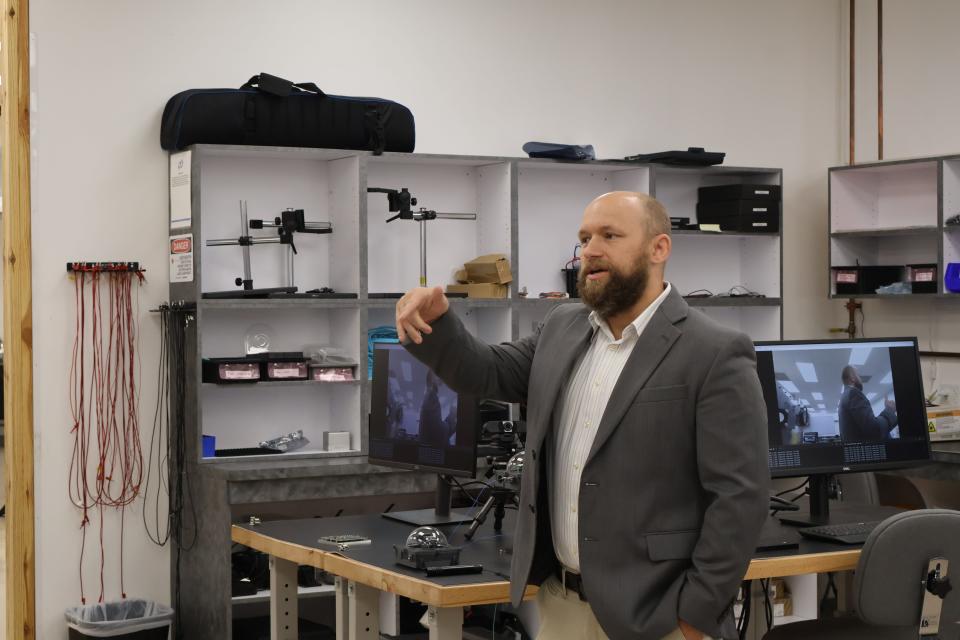Critical Frequency Design developing military laser communications at new Melbourne HQ
Imagine if American troops, drones and military vehicles could communicate on the battlefield using high-tech, hard-to-detect lasers that transmit data like fiber-optic cables — without the cables.
That's the futuristic vision of Critical Frequency Design, a fast-growing Melbourne firm launched five years ago that now contracts with the U.S. Army, Air Force, Navy and Northrop Grumman.
"Imagine that you are in a fighter group, and you need to relay information from a camera sensor on a drone. Or imagine you have actionable information that you need to relay to your team, so that they can make the right decision at the right time at as fast a speed as possible," said Micah Jenkins, chief engineer of optics.
"One of the major concerns with using (radio frequency) or wireless communications is that these forms of communications can be tapped. They can be detected. They have an electromagnetic signature. We can see that they're going on," Jenkins said.
"And with the right sophisticated tools, an advanced adversary can not only detect that they're going on — but can intercept them and know what's being said. That's a pretty scary problem," he said.
Thursday afternoon, Critical Frequency Design hosted a ribbon-cutting event for its new 20,000-square-foot headquarters in the NASA Commerce Center business park, south of Melbourne Orlando International Airport. Attendees took tours inside, but photos were not permitted because of security concerns.
More: Drone deliveries: Florida Tech showcases autonomous aircraft, touts future economic clout
West Melbourne couple Rebecca and Johnathen Warren launched the company in 2019 and set up a micro office inside Groundswell Startups — "we sold our house and had 18 months to make it work," he recalled. Their company now employs 28 workers.
"As we all know, it's critically important to equip our warfighters with the best gear possible so they can safely and successfully accomplish their mission," Patrick Gavin, district director for U.S. Rep. Bill Posey, R-Rockledge, told the ribbon-cutting crowd.
"Founded in 2019, CFD has achieved great success in this mission, supplying our nation's military with next-gen technology and raising their revenue from $900,000 in 2019 to a whopping $6.9 million in 2023," Gavin said, drawing applause.

Rebecca Warren is the CEO, while Jonathen Warren is general manager. He previously worked for 13 years at Harris Corp., where he served as a program manager in the Air Force F-35 Lightning II integrated core processor program.
Earlier this month, Critical Frequency Design announced a two-year, $991,000 contract to develop high-speed optical communications for U.S. Naval Air Systems Command.
The company is also developing a "jammer hammer" product that uses microwave photonics to identify enemy jamming signals and tamp them down.
Rick Neale is a Space Reporter at FLORIDA TODAY (for more of his stories, click here.) Contact Neale at Rneale@floridatoday.com. Twitter/X: @RickNeale1
This article originally appeared on Florida Today: Critical Frequency Design unveils high-tech HQ near Melbourne airport

